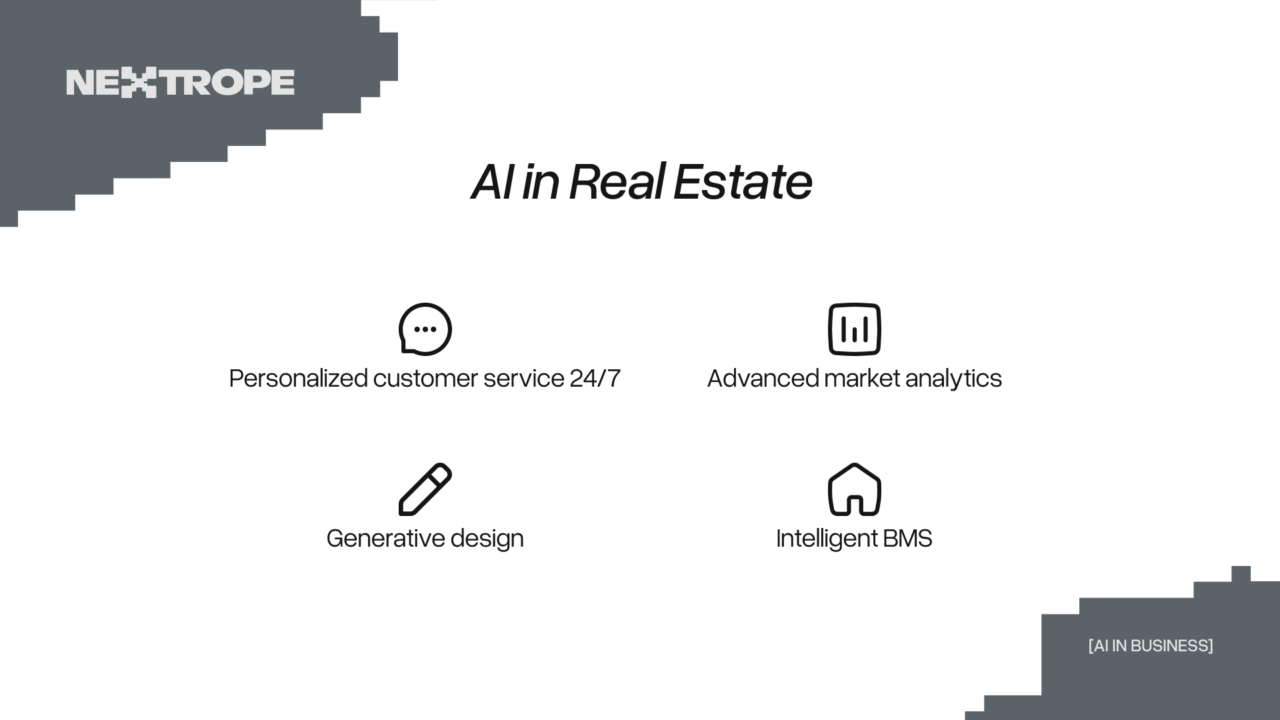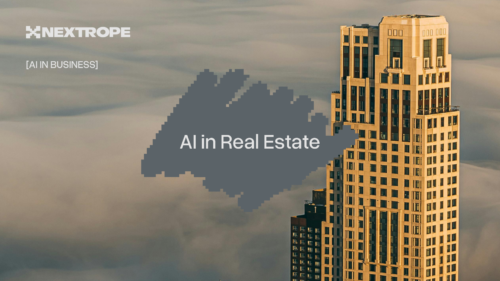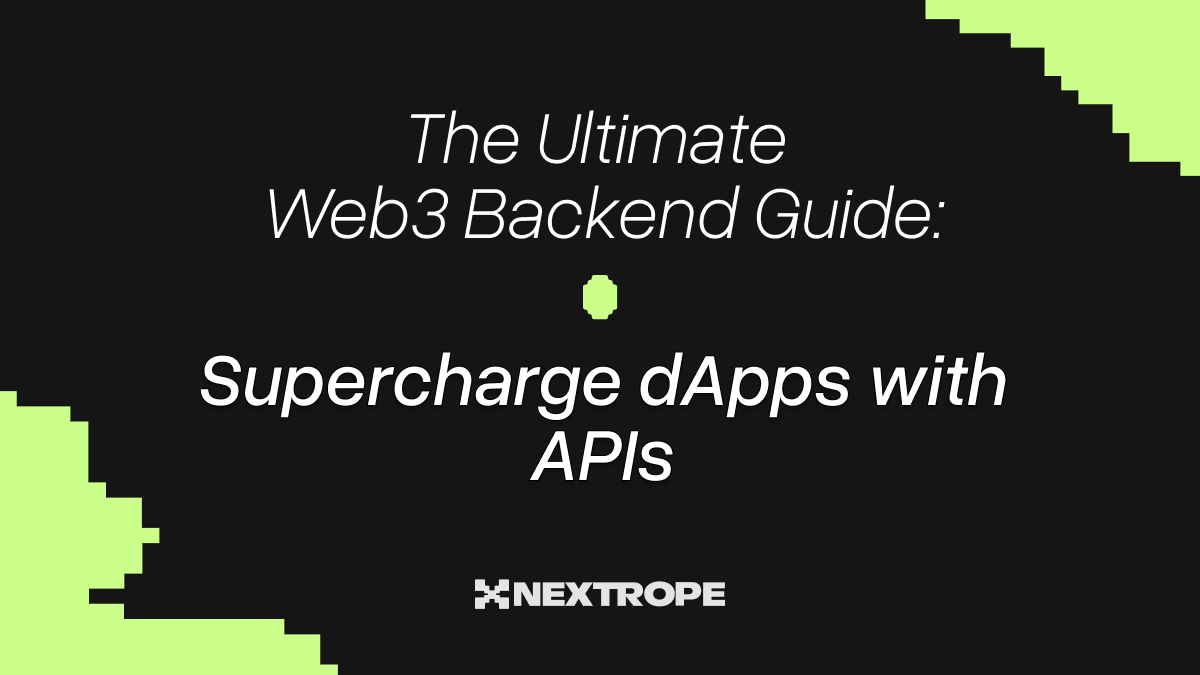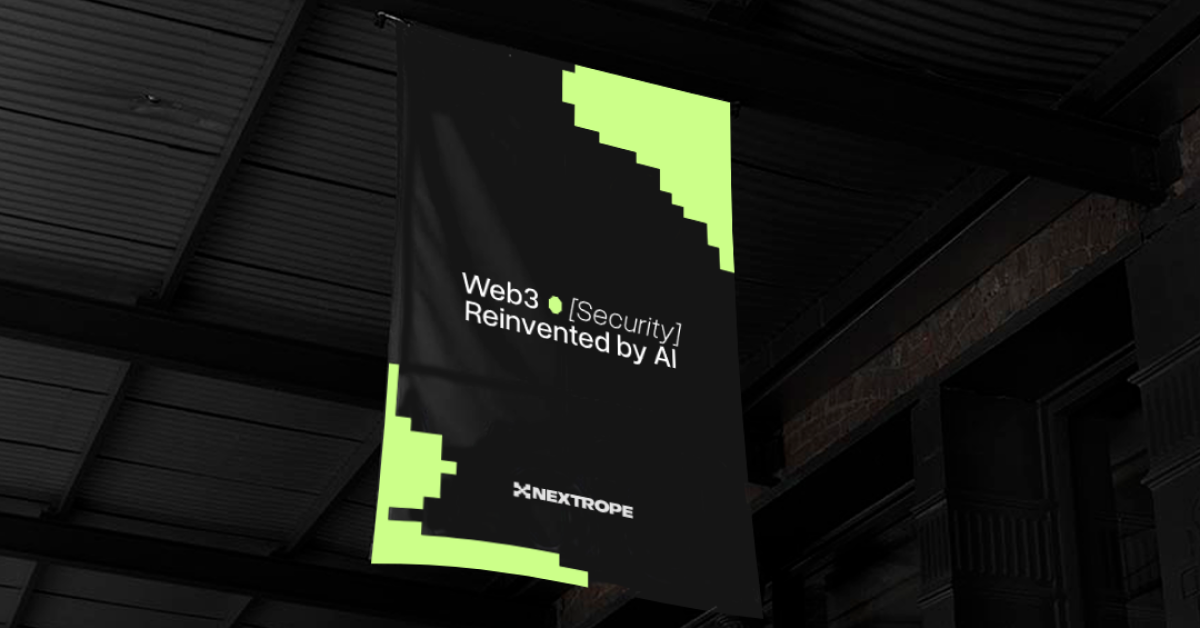The digital transformation is reshaping numerous sectors of the economy, and real estate is no exception. By 2025, AI will no longer be a mere gadget but a powerful tool that facilitates customer interactions, streamlines decision-making processes, and optimizes sales operations. Simultaneously, blockchain technology ensures security, transparency, and scalability in transactions. With this article, we launch a series of publications exploring AI in business, focusing today on the application of artificial intelligence within the real estate industry.
AI vs. Tradition: Key Implementations of AI in Real Estate
Designing, selling, and managing properties—traditional methods are increasingly giving way to data-driven decision-making.

Breakthroughs in Customer Service
AI-powered chatbots and virtual assistants are revolutionizing how companies interact with their customers. These tools handle hundreds of inquiries simultaneously, personalize offers, and guide clients through the purchasing process. Implementing AI agents can lead to higher-quality leads for developers and automate responses to most standard customer queries. However, technical challenges in deploying such systems include:
- Integration with existing real estate databases: Chatbots must have access to up-to-date listings, prices, and availability.
- Personalization of communication: Systems must adapt their interactions to individual customer needs.
- Management of industry-specific knowledge: Chatbots require specialized expertise about local real estate markets.
Advanced Data Analysis
Cognitive AI systems utilize deep learning to analyze complex relationships within the real estate market, such as macroeconomic trends, local zoning plans, and user behavior on social media platforms. Deploying such solutions necessitates:
- Collecting high-quality historical data.
- Building infrastructure for real-time data processing.
- Developing appropriate machine learning models.
- Continuously monitoring and updating models based on new data.
Intelligent Design
Generative artificial intelligence is revolutionizing architectural design. These advanced algorithms can produce dozens of building design variants that account for site constraints, legal requirements, energy efficiency considerations, and aesthetic preferences.
Optimizing Building Energy Efficiency
Smart building management systems (BMS) leverage AI to optimize energy consumption while maintaining resident comfort. Reinforcement learning algorithms analyze data from temperature, humidity, and air quality sensors to adjust heating, cooling, and ventilation parameters effectively.
Integration of AI with Blockchain in Real Estate
The convergence of AI with blockchain technology opens up new possibilities for the real estate sector. Blockchain is a distributed database where information is stored in immutable "blocks." It ensures transaction security and data transparency while AI analyzes these data points to derive actionable insights. In practice, this means that ownership histories, all transactions, and property modifications are recorded in an unalterable format, with AI aiding in interpreting these records and informing decision-making processes.
The Future of AI in Real Estate: Trends and Forecasts
AI has the potential to bring significant value to the real estate sector—estimated between $110 billion and $180 billion by experts at McKinsey & Company.

Key development directions over the coming years include:
- Autonomous negotiation systems: AI agents equipped with game theory strategies capable of conducting complex negotiations.
- AI in urban planning: Algorithms designed to plan city development and optimize spatial allocation.
- Property tokenization: Leveraging blockchain technology to divide properties into digital tokens that enable fractional investment opportunities.
Conclusion
For companies today, the question is no longer "if" but "how" to implement AI to maximize benefits and enhance competitiveness. A strategic approach begins with identifying specific business challenges followed by selecting appropriate technologies.
What values could AI potentially bring to your organization?
- Reduction of operational costs through automation
- Enhanced customer experience and shorter transaction times
- Increased accuracy in forecasts and valuations, minimizing business risks

Want to implement AI in your real estate business?
Nextrope specializes in implementing AI and blockchain solutions tailored to specific business needs. Our expertise allows us to:
- Create intelligent chatbots that serve customers 24/7
- Implement analytical systems for property valuation
- Build secure blockchain solutions for real estate transactions
Or check out other articles from the "AI in Business" series
 en
en  pl
pl 







